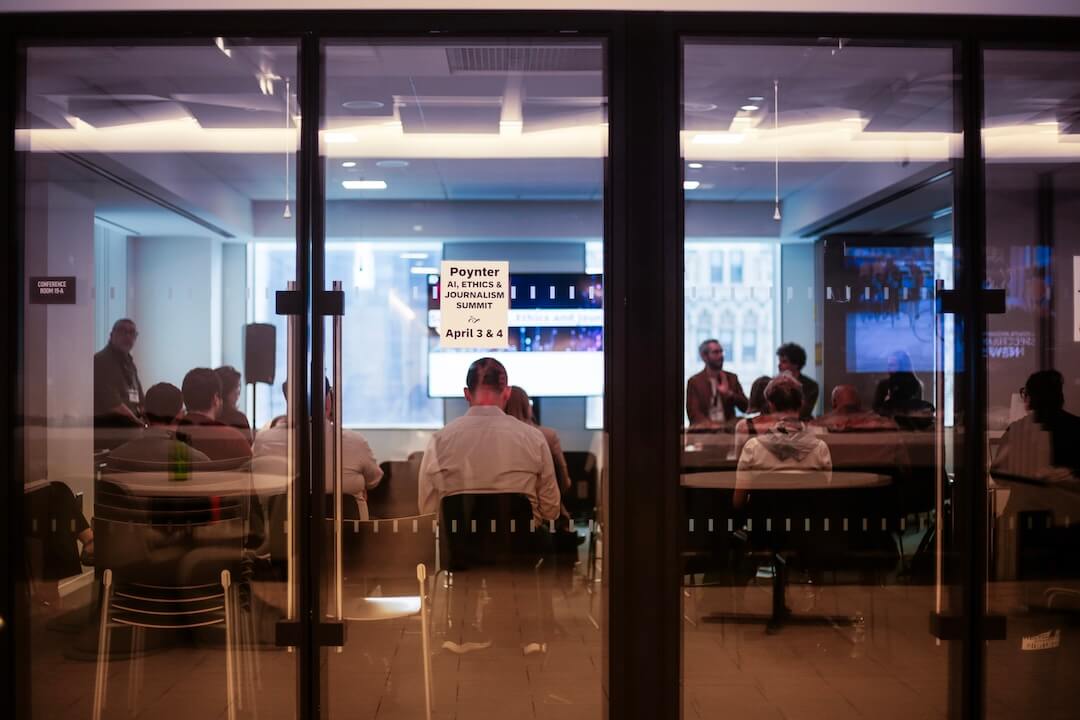 Covering COVID-19 is a daily Poynter briefing of story ideas about the coronavirus and other timely topics for journalists, written by senior faculty Al Tompkins. Sign up here to have it delivered to your inbox every weekday morning.
Covering COVID-19 is a daily Poynter briefing of story ideas about the coronavirus and other timely topics for journalists, written by senior faculty Al Tompkins. Sign up here to have it delivered to your inbox every weekday morning.
One of President Joe Biden’s plans is to have “theme days” where there is a central focus and message about the major challenges he wants to address. Issue one, day one, today, is COVID-19.
Here’s the list:
- Jan. 21 – COVID-19
- Jan. 22 – Economic relief
- Jan. 25 – Buy America
- Jan. 26 – Equity
- Jan. 27 – Climate
- Jan. 28 – Health care
- Jan. 29 – Immigration
- February – Restoring America’s place in the world
As promised, President Biden quickly signed a directive that requires masks to be worn on federal property.
Each day, according to the White House’s plans, will have specific messages and actions connected to the daily message. But, as we all know well, such plans can turn to dust when real life — and say, impeachment hearings — intervenes.
To keep us focused, my colleagues at PolitiFact have launched the new Biden Promise Tracker, just as they did for Trump and Obama. The Biden Promise Tracker will follow 100 important promises he made while running for office.
And probably his most important promise of all has to do with the pandemic:
President Biden promises to invoke the Defense Production Act and launch vaccine education campaigns to deliver 100 million vaccinations in his first 100 days in office. To hit that number by spring, the U.S. would have to more than quadruple the daily shots being delivered today. Stat provides perspective:
The 100-day goal would require the Biden team to administer 1 million doses a day, each day, for his first 100 days, would represent a significant ramp-up from the pace set by the Trump administration, which has vaccinated roughly 10.2 million Americans over the course of 30 days.
The first days of that 100 days may be substantially slower than it will be towards the end,” said Michael Osterholm, a member of Biden’s Covid-19 task force who called the goal “aspirational … but doable.’’ “It’s not going to occur quickly … you’re going to see the ramp-up occurring only when the resources really begin to flow.”
The first step is to distribute the 25 million doses of vaccine that have been sent to states. The Bloomberg vaccine tracker estimates, “Across the U.S., 4.9 doses have been administered for every 100 people, and 52% of the shots distributed to states have been administered.”
Less than 5% of Americans have been vaccinated with at least one shot. It is miles from the roughly 75% of people that need to be inoculated with the two-dose vaccine for the country to return to something like a normal life. Even then, unless the rest of the planet gets the vaccine, the World Health Organization and United Nations warn that the virus will keep coming back again and again.
The Biden team, no doubt, will focus on publicizing two things early on. The new administration will blame a slow start on the dysfunctional system it inherits. The Biden team will also try to keep you focused on short-term goals and achievements — not the 100-day plan.
Stat says there are some other things that Biden and Congress must fix, and fast:
The challenges facing the Biden team are numerous. States have still not received billions of dollars in supplemental funding appropriated by Congress, hospitals and state health departments are warning of staffing shortages, and vaccination appointment scheduling systems across the country are crashing daily. The Biden team will also have to contend with massive, last-minute changes to the existing vaccine rollout that the Trump administration is throwing out in its final days.
This is something that local journalists can check in the next week. Unless the money gets to local governments, the vaccine plan will remain stalled:
Late last month, Congress appropriated nearly $8.75 billion to help stand up state vaccination efforts, but the money still hasn’t reached states, according to the Association for State and Territorial Health Officials.
Some of the money is likely to arrive next week, but health departments will still need time to hire staff and ramp up efforts. Local health departments, which rely on states to funnel the money down to them, fear that they won’t receive their share of the money for weeks, if not months.
The American Hospital Association recently spoke to this issue in a letter to Department of Health and Human Services Secretary Alex Azar. Nearly a year after the pandemic began, hospitals are pleading with the federal government to “share goals and expectations” for fighting the virus. The hospitals are also asking for guidance, saying, “To deliver millions of doses of vaccine at the pace necessary requires that tasks be simplified and standardized. Otherwise, unnecessary confusion and complexity will slow down the effort and may lead to errors.”
Again, that letter was written on Jan. 7. Here’s more from the letter:
Currently, there are 64 disparate microplans developed by the states, a few large cities, and other jurisdictions. Has the Department of Health and Human Services (HHS) assessed whether these plans, taken as a whole, are capable of achieving this level of vaccination? If not, is the Department working with the jurisdictions to amend their plans to achieve this goal?
Hospitals are committed to be a central part of the vaccination effort, but hospitals alone cannot do it, especially as we care for burgeoning numbers of critically ill COVID-19 patients, and struggle to maintain sufficient staffing work to have enough personal protective equipment and other resources. We are aware that large chain pharmacies also have been enlisted, but it would be good to have a clear idea of precisely which organizations are engaged and for each to know what is expected of them to get to herd immunity.
[the_ad id=”667826″]
Key steps to getting to 100 million vaccinated Americans

People that received a COVID-19 vaccine socially distance as they wait the required fifteen minutes to monitor for reactions after getting the shot at the Dallas County mass vaccination site at Fair Park Wednesday, Jan. 20, 2021, in Dallas. (AP Photo/LM Otero)
Chain pharmacies, through the National Association of Chain Drug Stores, say drugstores can deliver 100 million vaccines every month (much less than 100 days) if the government can get the vaccines in their hands and if people will step up to get the shots. The association produced a video about how pharmacies could become an important vaccine pipeline.
NACDS says that 90% of Americans live within five miles of a community pharmacy. The group adds:
Of vital importance, we share President-elect Biden’s commitment to equity and to overcoming the healthcare disparities that have led to COVID-19’s disproportionate effects on some races and ethnicities and on our neighbors with particular vulnerabilities. Pharmacies and pharmacy teams are committed to enhancing vaccine access both in their stores, mass clinics and mobile clinics — as we have done in collaboration with public health during prior epidemics, pandemics and natural disasters such as hurricanes. The trust of local pharmacists goes a long way in increasing vaccine confidence across all communities.
Amesh Adalja, a senior scholar at the Johns Hopkins Center for Health Security, told Stat that for President Biden to reach the 100 million mark, America will have to increase the vaccine workforce. That could happen “by further mobilizing the National Guard and U.S. Public Health Service, allowing civilians to get vaccinated at the Department of Veterans Affairs, and changing regulations to let other health providers, including EMTs and dentists employed by the government, to deliver vaccines.”
Will your neighbor get vaccinated?
I have not included a ton of stories about vaccine reluctance partly because reporting about how reluctant people are may only encourage more reluctance. But this data project from MIT Technology Review is a bit more interesting. It looks at whether your neighbor is likely to get vaccinated.
Survey data gathered through Facebook by Carnegie Mellon University’s Delphi Lab finds the percentage of respondents who would accept a vaccine falls as low as 48% in Terrebonne Parish, Louisiana, and peaks as high as 92% in Arlington County, Virginia.
The Delphi Lab has been helping the CDC to track and understand the spread of covid infections since the beginning of the pandemic. The latest survey will help the agency identify where to perform more targeted education campaigns. The research group is also working with several county-level health departments to inform local outreach.
[the_ad id=”667872″]
Biden extends eviction moratoriums until the end of March
Another of President Biden’s first-day priorities was to extend the federal ban on evictions through March. The Dallas Morning News looked at how moratorium after moratorium has cost landlords:
Landlords are owed more than $70 billion in back rent, utilities and additional fees, according to an estimate by Mark Zandi, chief economist at Moody’s Analytics.
The FHFA, the independent agency that oversees Fannie Mae and Freddie Mae, announced that landlords with loans financed by the two mortgage giants can pause payments through March so long as they don’t evict tenants for nonpayment of rent. And FHFA just announced that Fannie and Freddie would pause foreclosures and evictions on homeowners through February.
Lawyers for property owners are working on strategies to get around restrictions. They are suggesting property owners consider month-to-month rental agreements and then not renew the contract when a renter fails to pay. That way, it is not considered to be an “eviction.”
Cincinnati attorney Jeffrey Greenberger says, “There is no moratorium on suing people for rent. I think the new moratorium might allow a little crack of light, but it’s a state-by-state, city-by-city possibility. And I think it’s a very slim crack of light. What I’m recommending to people (is) you just sue people for rent — not for eviction — in small-claims court.”
We’ll be back tomorrow with a new edition of Covering COVID-19. Sign up here to get it delivered right to your inbox.
[the_ad id=”667878″]









